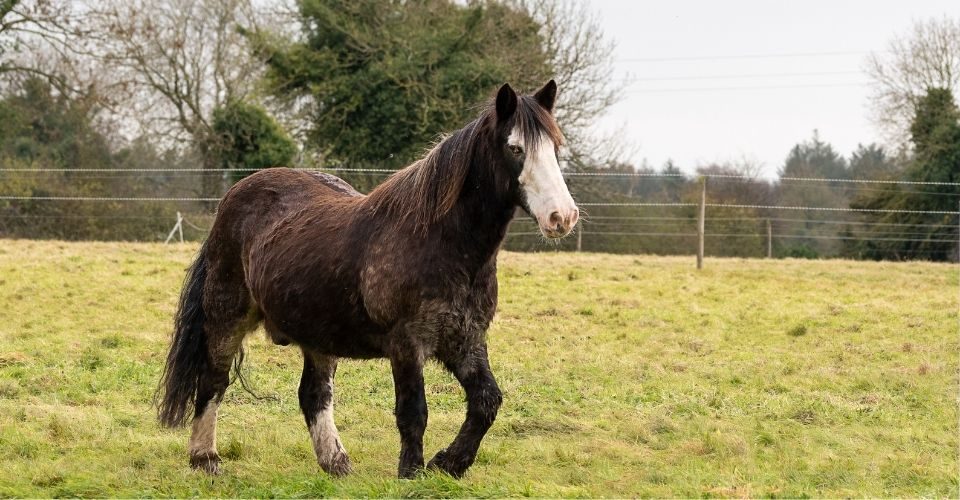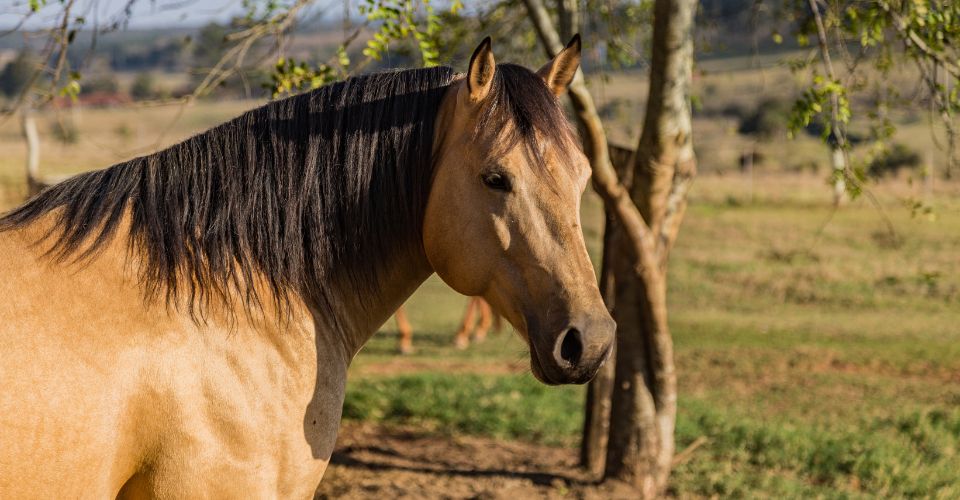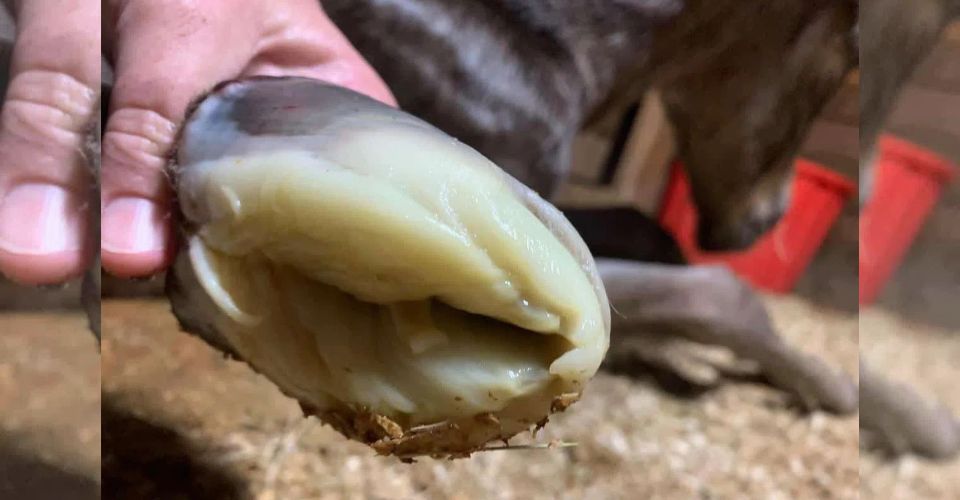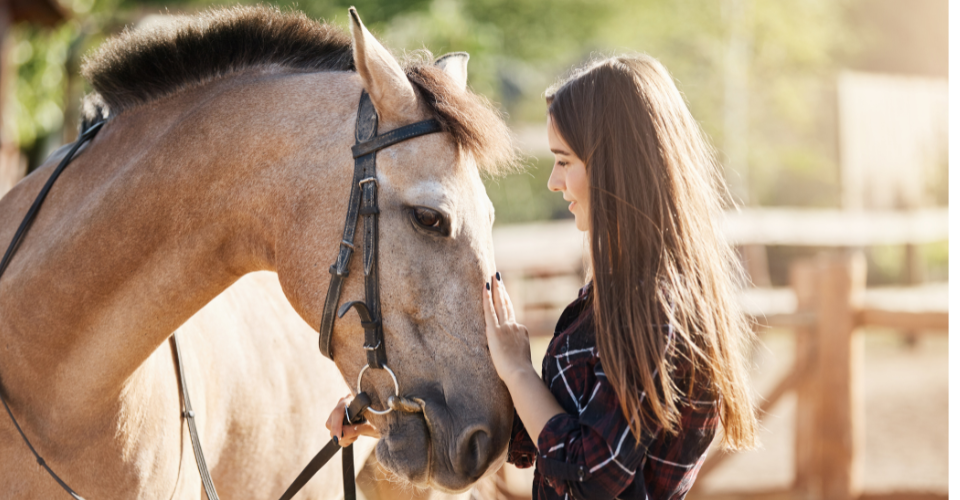Gypsy Horse breed is gaining fame rapidly due to their serene temperaments, heavenly feathering, and attractive coats. Although they were raised to pull caravans, they make great riding horses as well. They can be ideal for kids, beginners, and advanced adult riders due to their tranquil nature.
Gypsy Horse: History and Origin
The history of the Gypsy Horse begins with the Gypsies of Great Britain, who required a horse with the strength to pull their caravans. They wanted a horse that was gentle, strong, mild-mannered, and easy to train. Gypsies bred their ideal horse, relying on the Clydesdale and Shire for size and adding Dales pony and Fell pony into the bloodlines.
The Gypsy Horse was unknown in the US until the 1990s when two Americans discovered it in 1995 while traveling through Great Britain. They were enthralled by the horses and stunned at the lack of the breed’s official recognition. Hence they studied all about the breed and gave them a universal name, “Gypsy Vanner”, vanner being a common name for horses apt for pulling caravans. The name is usually used in the US. Elsewhere, names like Gypsy Horse, Gypsy Cob, Irish Cob, and Tinker are used.
Gypsy Vanner came to the US in 1996, and the same year the breed’s registry, the Gypsy Vanner Horse Society, was formed. Gypsy Horse becomes a refined and recognizable breed, thanks to the liberty of movement between Britain, Ireland, and other breeding grounds around the world.
The Gypsy Horse was formerly bred by Britain’s Romani Travelers and Irish Travelers to pull the wagons in which they lived and traveled. Unlike others, Gypsy horses were preferred among the Roma people and became highly prized. They produced a cob-sized, big-boned, feathered, colorful, gentle wagon horse with the best of their mix-breed stock, Welsh Cobs, Clydesdales, Fell Ponies, and Dales Ponies.
Until WWII, Gypsy Horse wasn’t a breed as such but only was a common horse with varying bloodlines from one family to another. Then came the idea of honing it into a full-fledge breed. Breeders intended to produce a small Shire with more feathers, more color, and a finer head; the perfect caravan horse. Since the Romanis responsible for this selective breeding passed down the pedigrees and desired traits orally, it is now impossible to classify which the foundational Gypsy Horses were.
Gypsy Horse Size
Gypsy Horses are comparatively small horses, standing between 12 to 16 hands or around 48 to 64 inches tall. Male and female Gypsy horses are similar in size, females just slightly smaller. They weigh between 1,000 – 1,800 pounds. While they may be shorter than a typical draft horse, they’re largely built and easily competent in pulling caravans and carriages while also assisting as riding horses that can support heavier riders.
Breeding and Uses
Gypsy horses originated to pull caravans, but they’ve gained popularity for other purposes too. It makes a great riding horse due to its laid-back temperament. It can be used from dressage to trail riding and more. They’re often so cool and mannerly that they can be a good choice for a family horse.
Gypsy horses have also found a place in therapeutic riding courses. They have treated people from patients with special needs to military veterans with Post Traumatic Stress Disorder (PTSD).
The Gypsy still makes an inspiring cart horse and can be found competing at shows and driving competitions, as well as pulling carriages for pleasure.
Colors and Markings
Gypsy Horses come in a variety of colors and solid coats. They are generally known for their colored coats with:
Tobiano—white patches on a dark-colored coat.
Blagdon—splashes of white on the belly of a dark-colored coat.
Skewbald—white patches on any colored base coat except for black.
Piebald—a mix of black and white.
Since it’s not a color breed, the breed registry accepts horses no matter what their coat color or pattern is.
Unique Characteristics of the Gypsy Horse
Some of the distinguishing characteristics of Gypsy Horses are as under:
- Gypsy horses have heavy feathering at their knees and hocks, dense flowing manes, and tails.
- Although it’s a small horse breed, it has a broad chest, well-rounded withers, and sloping shoulders that help them pull heavy carriages and carts.
- They have a compact, muscular build and large and dense bones.
- They’re famous for their spotted and mixed color coats.
- Their heads are more refined than most draught—draft—breeds, with kind eyes and a broad forehead.
- Like all other horses bred for pulling, Gypsies also have massively powerful hindquarters, with a smooth, broad croup.
- Their legs have straight, defined joints and proportionately sized hooves.
- Their movements are natural yet stunning, with power, spur, and flow.
- Gypsy Horses are known for their tender, faithful and willing nature.
- They are sensible and intelligent.
- They are economical because they require little feed given their size.
Diet and Nutrition
Gypsies have a slow metabolism rate and hence gain weight easily. They need a specific diet, or they’ll be susceptible to metabolic issues. To avoid these problems, owners put their Gypsies on a high-fat, low-sugar diet. Many gypsies do well with a ration balancer and quality hay rather than a typical feed concentrate.
During summers, some Gypsies need grazing muzzles if out on lush fields.
Common Health and Behavior Problems
Gypsies usually live a healthy life but can be prone to a few health diseases if not cared for properly.
Scratches
If mud or dried dirt gets trapped in the feathering, it can cause many cuts and scratches on the legs. These scrapes and cuts can lead to other health issues, such as deep swelling or lameness on the lower leg.
Malleanders and Sallenders
Over-production of keratin (hyperkeratosis) can lead to malleanders and sallenders, keratin is the protein responsible for the long mane, tail, and feathering of Gypsy. Keratin growth can cause thick, crusted growths on the front and hind legs that need to be removed and frequently managed, or they can end up as a bacterial or fungal infection.
Chronic Progressive Lymphedema
This causes swelling of the lower leg, as the skin of the legs becomes thicker and lymph fluid starts to build up in the legs. There’s no cure for this condition, and the swelling will continue to grow till death.
Gypsies’ owners need to be wide awake for these infections as they can lead to extreme discomfort for the horse, causing scabbing, lesions, and swelling in the skin. At times, it can lead to maggot infestations if not cured on time.
Grooming
Gypsy horses need a significant amount of grooming to stay fit and comfortable. Their long manes and tails require special care, especially if they’re living in a muddy place. Its feathering can be cleaned using shampoo and conditioner. This can be time taking, but the feathering needs to be checked every day if it has to be kept in good condition. Mane ‘N Tail Combo Deal Shampoo and Conditioner is a good choice as it contains the formulas that have been proven to improve scalp, rejuvenate weak, thin, or damaged hair.
Many owners often use mud knots and braid their horses’ manes and tales to prevent tangles and keep them clean. The Gypsy’s feathers also need regular detangling and brushing if it gets dirty often.
If it’s a Gypsy with white lower legs, the feathers will become stained or discolored. Frequent grooming of feathers is significant so that owners can rapidly discover any issues on the lower legs, like a cut or the start of scratches. The feathering can also cover up the swelling or attract moisture, so it’s vital to clean it.
Training
Experienced trainers have verified that Gypsy Horses are the easiest to handle and manage. They are smart and intelligent, but like most horses, they require ample time and understanding to hone their talents.
Pros and Cons of Having a Gypsy Horse
| Pros | Cons |
| Suitable for children and adults | Requires high-maintenance grooming. |
| Excellent Temperament | Can be expensive |
| Easy to Train |
Celebrity Gypsy Horses
“The Gypsy King” is a famous stallion that was imported to the US in 1998. His photographs can be seen on calendars, in magazines, and in articles about the breed. He was the motivation for a Breyer model horse that shares his name.
Is Gypsy the Right Horse for You?
Calm, easy-to-train, and a great temperament, Gypsy is a wonderful horse for everyone. With its qualities come a lot of supervision and maintenance. Be ready to wisely manage its diet and perform thorough, regular grooming that is far more than the typical grooming an average horse needs.
Gypsy Horses are suitable for experienced as well as inexperienced riders. They are a good option for both pleasure and as competition horses. Gypsy is just the right horse for you if you’re looking for a horse that can be ridden and driven. Due to their short heights, they are a good choice even for adults who have problems mounting and dismounting larger horses.
Gypsy Horse: A Quick Summary
| Alternative Names | Gypsy Cob, Colored Cob, Tinker Horse, Irish Cob, Gypsy Vanner, Romany Tinker, Traditional Cob, Galineers Cob |
| Nicknames | Cob (UK), Tinker (Europe), Gypsy (USA) |
| Nature | Calm, Gentle, Sensible, Willing |
| Colors | Tobiano, Blagdon, Skewbald, Piebald |
| Body Structure | Refined head, Strong muscular neck, deep chest, well-rounded withers, well-sloped shoulders, strong hindquarters with the well-rounded rump. |
| Life Expectancy | 20 to 25 years |
| Average Weight | 1400 lbs |
| Average Height | 12 to 16 hands, or around 48 to 64 inches tall. |
| Health | Susceptible to diseases like Chronic Lymphedema and scratches caused by fungus and mites. |
| Gaited | Yes |
| Diet | Hay, Grass, Alfalfa, Freshwater |
| Country of Origin | Ireland and the UK |
| Ancestors | Clydesdale, Shire, Dales Pony, Fell Pony |
| Blood Type | Warm |
| Popular Traits | Strength, Willingness, Intelligent |
| Common use | Show horse in competitions and fairs. Equestrian sports, Carriage etc. |
| History | The earliest Gypsy horses were created in the 19th century, but the present one was developed after World War II. |





